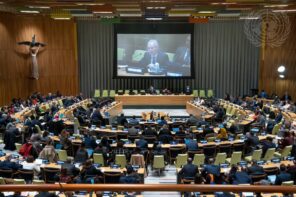
Wednesday August 13, 2025
The Full Stack of Brand Messaging: Purpose, Mission, Vision, Values, and Taglines in 2025
But in 2025, when public trust in institutions is under pressure, attention spans are shorter, and employee engagement is a daily struggle, are these declarations still doing the job? Or have they become more of a checkbox for organisations?
The answer lies in expanding the frame. Today, brands are increasingly defined by five core elements: Purpose, Mission, Vision, Values, and Tagline. Together, they form the full stack of brand messaging. Each plays a role, but only a few companies use all five well.
Why These Elements Exist
Mission and vision statements first gained traction in the 1970s and 80s when management thinkers like Peter Drucker began urging companies to articulate their purpose beyond just profit. It was a time of growing shareholder scrutiny and a need to unify large, complex organisations.
The mission was about what a company does today. The vision? Where it aims to be tomorrow. Harvard Business Review’s 1996 piece, “Building Your Company’s Vision” by Collins and Porras, became gospel for managers looking to codify identity.
Later, purpose entered the conversation as brands sought to articulate why they exist beyond profit. Add values, the behaviours they expect internally, and taglines, the memorable phrases that echo externally, and companies now operate with a five-part messaging system.
Yet many of these statements were crafted in isolation, framed, and forgotten.
A Clearer Model: What Each One Does
Here’s how the five brand elements relate in function, time horizon, and audience:
| Element | Definition | Time | Audience | Example |
| Purpose | Why we exist | Timeless | Internal & External | IKEA: “To create a better everyday life for the many people” |
| Mission | What we do today | Present | Internal | Google: “To organize the world’s information and make it universally accessible and useful” |
| Vision | Where we’re going | Future | Internal | Tesla: “To create the most compelling car company… by driving the world’s transition to electric vehicles” |
| Values | How we behave | Always | Internal | LEGO: Imagination, creativity, fun, learning, caring, quality |
| Tagline | What we say to the world | Momentary | External | Airbnb: “Belong Anywhere” |
Each layer builds on the next. Purpose sets the tone. Mission anchors the now. Vision charts the future. Values shape culture. The tagline translates it all for the world.
When these statements work together, they form a unified narrative. When they conflict or become diluted, they confuse both employees and customers.
Do People Actually Believe in Them?
A Gallup study revealed that only 41% of U.S. employees strongly agree that they know what their company stands for and what makes it different. Meanwhile, PwC found that only 28% of employees could accurately recall their organisation’s mission without prompting.
And when it comes to purpose, Deloitte’s 2023 Global Human Capital Trends found that nearly 9 in 10 employees believe that purpose-driven companies perform better, but only 36% say their organisation clearly communicates that purpose.
The consequences are real. According to Growett, companies with clearly communicated, meaningful vision statements enjoy 26% higher levels of employee engagement on average. That engagement correlates with productivity, retention, and customer satisfaction.
Still, many companies miss the mark.
What Works in 2025
So, how should organisations structure their messaging today?
Here’s what leading brands are doing differently:
1. Start With Purpose
It must be clear, credible, and universal. Dove’s “To help women everywhere develop a positive relationship with the way they look” guides everything from product innovation to advocacy. Purpose is not marketing, it’s identity. Purpose statements that emerge from the ground up, not just the C-suite, tend to land better. Internal workshops, surveys, and values alignment exercises are now common in progressive firms.
2. Distinguish Mission From Vision
Your mission is what you do now. Your vision is what you’re trying to become. Confuse the two, and you confuse your team. Microsoft’s shift from “a PC on every desk” to “to empower every person and every organisation on the planet to achieve more” is a case in point. Vision should evolve as context changes.
3. Make Values Actionable
Values need to guide real decisions. LEGO’s values are used in hiring, leadership reviews, and even customer service. If your values aren’t operational, they’re ornamental. The best values statements don’t live on the website. They live in onboarding, performance reviews, internal rituals, and customer interactions. Leaders repeat them. Managers reference them.
4. Keep the Tagline Simple
Airbnb’s “Belong Anywhere” and Nike’s “Just Do It” work because they’re rooted in the brand’s larger truth. By contrast, when Fujitsu led with “trust” while entangled in the UK’s Horizon scandal, it felt hollow. The Guardian called out the misalignment plainly.
How to Communicate It All
This is where brand and communications teams earn their keep.
- Internally, ensure every employee can repeat the mission in plain terms. Use it in presentations, team standups, hiring pitches. Build it into culture decks, not just investor decks.
- Externally, integrate the mission into campaigns, not just as a line in the boilerplate. Patagonia, for instance, embeds environmental messaging in every touchpoint, from product labels to press releases.
- Across channels, visual identity, tone of voice, and values should echo the mission. It’s not just what you say, but how you behave.
In 2025, the most resilient brands are those that define why they exist, what they do, where they’re going, how they operate, and what they say to the world. That’s the full stack.
If your purpose doesn’t resonate internally, your values aren’t visible in behaviour, and your tagline means nothing to your customers, it may be time to take the plaque down, and start building from the ground up.
Curzon PR is a London-based PR firm working with clients globally. If you have any questions, please feel free to contact our Business Development Team bd@curzonpr.com







Follow us